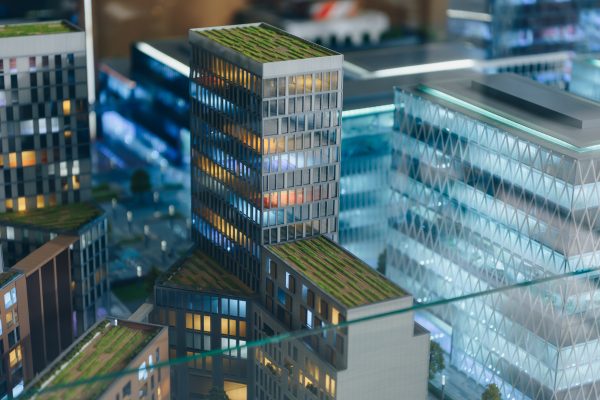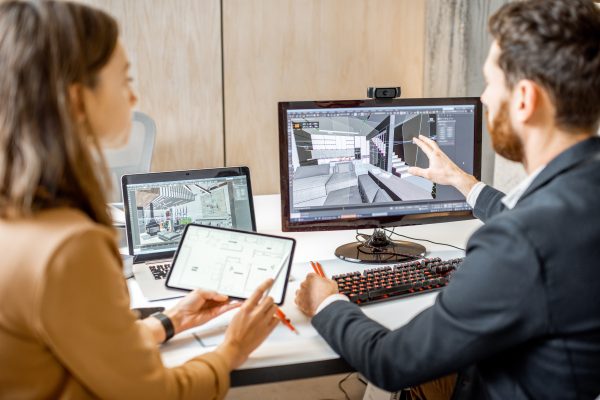
Buildings are the foundation of towns and cities, showing human creativity and dreams. However, as we step into an era defined by digital transformation, the definition of what makes a building remarkable is changing. In fact, according to Juniper Research, the number of buildings that will deploy smart technologies will grow to 115 million in 2026. Enter the era of smart buildings, where architectural technology is applied to create structures that not only shelter but also actively engage with their people and the environment. In this blog, we embark on a journey through the rise of smart buildings. We’ll explore the fusion of architecture and technology that is shaping the cities of tomorrow.
The Evolution of Smart Buildings
The concept of smart buildings is not entirely new. It has its roots in the early integration of automation systems for heating, ventilation, and lighting. However, improvements in architectural technology have pushed smart buildings beyond mere automation into a realm where they are intelligent, flexible, and sustainable entities.
At the heart of smart buildings lies a complex network of sensors, actuators, and communication systems. This network enables smooth interaction between the physical and digital realms. Furthermore, the sensors gather data on various parameters such as usage, temperature, air quality, and energy consumption, letting the building respond constantly to changing conditions.
The Role of Architectural Technology

Architectural technology serves as the enabler of smart buildings. Therefore, it provides the tools and methodologies to integrate digital systems seamlessly into the fabric of built environments. From the design phase to construction and operation, architectural technology plays a pivotal role in every aspect of a smart building’s lifecycle.
Design and Visualization
Building Information Modeling (BIM) is reshaping the traditional landscape of architecture and engineering collaboration. Conventional design approaches often rely on fragmented sets of drawings and specifications. BIM, on the other hand, offers a unified platform for creating comprehensive digital representations of building projects. At its core, this architectural technology goes beyond mere 3D modeling. It incorporates rich layers of data that capture not only the physical geometry of structures but also their functional and behavioral attributes. This holistic approach enables architects, engineers, and other stakeholders to collaboratively develop and refine designs with unprecedented accuracy and efficiency.
One of the key advantages of BIM lies in its ability to facilitate enhanced visualization. It would immerse stakeholders in virtual environments populated by digital prototypes. Moreover, it empowers them to explore and interact with buildings long before construction begins. This immersive experience allows for the identification of potential design flaws, clash detections, and optimization opportunities. Therefore, this architectural technology serves as a powerful tool for simulating and analyzing various aspects of building performance. From structural integrity and energy efficiency to lighting and ventilation systems, BIM enables predictive modeling and scenario analysis.
Overall, Building Information Modeling represents a paradigm shift in the way buildings are conceptualized, designed, and managed. By harnessing the power of advanced digital technologies, BIM not only enhances collaboration and communication but also empowers designers to create more innovative, sustainable, and resilient built environments. The architecture industry continues to embrace BIM. Thus, its transformative impact will undoubtedly shape the future of design and construction for years to come.
Integration of IoT and Sensor Networks
Once the design phase is complete, the focus shifts to implementation. At this juncture, architects and engineers leverage the capabilities of IoT technologies. Consequently, sensors are strategically embedded throughout the structure. These sensors act as vigilant observers, continuously gathering real-time data on a myriad of parameters encompassing everything from temperature and humidity levels to occupancy patterns and air quality.
This architectural technology serves as the lifeblood of the smart building ecosystem. Moreover, the data empowers the structure to dynamically respond to the changing needs of the people and the surrounding environment. For instance, sophisticated HVAC systems equipped with IoT-enabled sensors can autonomously adjust heating and cooling settings based on occupancy levels and external weather conditions. HVAC systems are designed to ensure optimal comfort while minimizing energy consumption.
Additionally, the seamless integration of sensor networks enables buildings to proactively identify and address potential issues before they escalate into larger problems. For instance, moisture sensors embedded within walls can detect early signs of water leaks. It triggers alerts to building management systems for prompt intervention.
Intelligent Building Management Systems
Central to the operation of smart buildings are Intelligent Building Management Systems (iBMS). These systems serve as the building’s brain, orchestrating the actions of various subsystems such as HVAC, lighting, security, and energy management.
iBMS plays a crucial role in enhancing security and safety within smart buildings. This system is integrated with surveillance cameras, access control systems, and fire detection sensors. Therefore, it can detect and respond to security breaches, unauthorized access attempts, and potential safety hazards in real time. In the event of emergencies such as fires or intrusions, iBMS can trigger automated responses. Moreover, this architectural technology can activate fire suppression systems or alert emergency responders, helping to mitigate risks and protect the people inside.
Sustainable Practices

Sustainability lies at the core of smart buildings, and technology plays a crucial role in realizing this vision. Additionally, technology empowers architects to create environmentally sustainable and economically feasible buildings, utilizing passive design strategies for optimal natural ventilation and daylighting, alongside advanced energy management systems to reduce waste over time.
The Future of Smart Buildings with Architectural Technology: Challenges and Opportunities
As we look to the future, the potential of smart buildings is boundless. However, realizing this potential requires addressing several challenges. These include interoperability issues, data privacy concerns, and the need for skilled professionals who can navigate the complexities of architectural technology.
Yet, amidst these challenges lie tremendous opportunities for innovation and collaboration. Therefore, by fostering an ecosystem of partnerships between architects, engineers, technology providers, and policymakers, we can accelerate the adoption of smart building solutions and create more sustainable, resilient, and human-centric cities.
Conclusion
Smart buildings emerge as a blend of architecture and technology. Moreover, they represent the goals of a connected and sustainable future. Through the seamless integration of digital systems into the built environment, we can create spaces that not only inspire awe but also enhance the quality of life for generations to come. As we stand on the threshold of a new era, let us embrace the power of architectural technology.
Ready to shape the future of architecture with top talent? Partner with BizForce for your staffing needs today! We are excited to integrate our expertise and innovation to bring your architectural visions to life. Contact us here.
